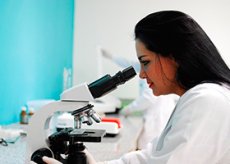New publications
Intrahospital bacteria is afraid of viruses
Last reviewed: 02.07.2025

All iLive content is medically reviewed or fact checked to ensure as much factual accuracy as possible.
We have strict sourcing guidelines and only link to reputable media sites, academic research institutions and, whenever possible, medically peer reviewed studies. Note that the numbers in parentheses ([1], [2], etc.) are clickable links to these studies.
If you feel that any of our content is inaccurate, out-of-date, or otherwise questionable, please select it and press Ctrl + Enter.

A pair of bacteriophage viruses have proven effective in combating one of the most dangerous microbes that is resistant to antibiotics.
It is not necessary to have a medical education to understand how dangerous an infection that is resistant to antibiotics can be. For example, a person falls ill with an infectious disease - the doctor prescribes a strong antibiotic, but it does not work. He prescribes another - even stronger - but it again does not work. Therefore, resistant microorganisms are a truly huge problem in medicine. Such resistant microbes include hospital-acquired infections.
The global increase in cases of hospital-acquired infections is explained by the development of antibiotic resistance. Thus, one of the most dangerous microbes is considered to be Acinetobacter baumannii. If this microorganism is found in intensive care units or purulent surgery, it can provoke a lot of complications in patients - examples of this are the development of hospital pneumonia and brain abscess in patients. Acinetobacter ignores the vast majority of antibiotics, tolerates dryness, UV treatment or disinfectant solutions well.
In most cases, they try to fight such microorganisms using the latest antibiotics, which the bacteria do not yet "know by sight". A new drug is something that the bacteria have not encountered yet, so they are not able to counteract it. But you can do otherwise.
Microbes can be attacked by a specific group of viruses called "bacteriophages". Scientists wondered: is it possible to direct these viruses against antibiotic-resistant bacteria?
A similar idea was voiced a long time ago - back when bacteriophages were discovered. However, the experiment was postponed due to the advent of antibiotics. Today, scientists have again remembered the possibility of using specific viruses.
Not all viruses are suitable for such a role. First of all, the bacteriophage must be selective with respect to a specific microbe. The second condition is that the virus must infect the maximum possible number of microbial cells. And the third condition is that the virus must remain “combat-ready” even within the microbial structure.
Specialists representing several Russian institutes and research centers have identified a pair of suitable bacteriophages that can be used to combat hospital-acquired infections. They turned out to be viruses belonging to the Podoviridae family.
The effect of the viruses was tested on 100 microbial samples. It was found that bacteriophages instantly “stick” to the microbial cell and begin to destroy it fairly quickly. In addition, their work is strictly selective: they do not attack the cells of healthy intestinal flora.
Scientists are confident that the use of such technology is truly promising. It is very possible that such a method will soon leave the laboratory and become firmly established in general clinical practice.
The scientists' work is described in detail in the journal Viruses.

 [
[